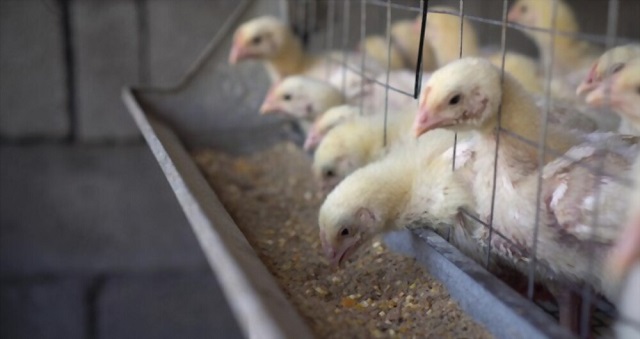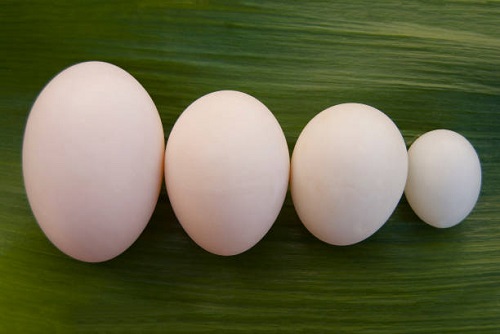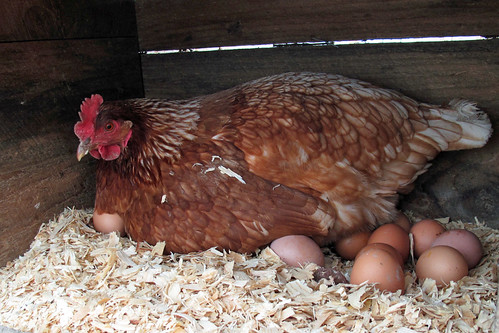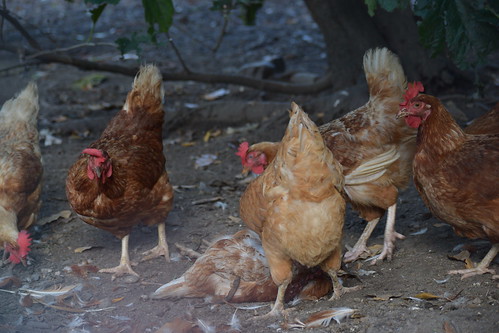Feed Conversion Ratio is a topic of great importance in livestock farming, most especially commercial animal farms. Feed takes about 70 percent of the total cost of production in poultry production, hence the feed conversion ratio has considerable monetary importance to a livestock farmer.
What is Feed Conversion Ratio (FCR)?
Feed conversion ratio (FCR) is simply defined as the mathematical relationship between the feed an animal consumes and the weight that the animal gains by consuming the feed. Feed conversion ratio is a measure to determine the productivity and efficiency of an animal.
Chickens can convert food into meat very efficiently, and values from 1.50 to 1.90 can be achieved. Modern broiler chickens have been genetically modified and developed to gain weight at an extremely fast pace and efficiently using all nutrients.
If chickens are well-managed, they will consistently have great efficiency. The key to getting a good FCR is to be able to understand the basic factors that can affect performance and adopt management methods that could help in optimizing FCR.
How to Calculate Feed Conversion Ratio
To calculate FCR, the quantity of feed consumed and the live body weight must be known. The formula for calculating FCR is:
For example, if a broiler chicken consumed 5 kg of feed to produce 3 kg of meat, the FCR is 1.67; (i.e. 5 kg divided by 3 kg).
The lower the feed conversion ratio, the more efficient the animal is in converting feed to meat or other product.
Factors that Affect FCR in Chickens and How to Improve FCR
Let’s consider some of the factors that affect the feed conversion ratio for animals, especially poultry birds. We will also include the things that could be done to improve FCR.
1. Temperature
Temperature is a common factor that influences feed conversion rate. Birds are homeothermic, that is, they are warm-blooded animals. This means that they regulate or stabilize their body temperature metabolically irrespective of the environmental temperature.
In cold weather, chickens will consume more feed so as to produce more energy, and most of the energy or calories produced would be used to heat up the body and maintain the normal body temperature. The energy won’t be used to produce meat (or converted to meat). Optimal temperature allows chickens to utilize nutrients from feed to fatten up instead of using them to regulate body temperature.
Chickens consume less feed and convert it less efficiently if the body temperature is very high as their biological cooling mechanism (homeostasis) during hot weather needs energy, just like the heating mechanism they use when it’s very cold.
Likewise, when birds consume food, the body temperature increases accordingly to the result of the metabolic process that occurs during digestion. For this reason, chickens should not be fed in the hotter hours of the day. It is best to feed well early in the morning and at dusk which is when the temperature is usually a little cooler. This will improve FCR and also decrease mortality.
2. Ventilation and Air Flow
Temperature and ventilation are closely related. It is not rocket science that good ventilation within the pen will lower the temperature within the pen or house. Fresh and clean air is very important for growing chickens as well as feed and fresh water.
A poorly ventilated pen can have a lot of accumulation of ammonia and other toxic gases and many studies have shown that FCR is adversely affected by ammonia levels greater than 25 ppm, i.e. something almost imperceptible by human smell. Chicken farmers are advised to always ventilate the house or pen to remove accumulated ammonia.
Ventilation requirements may vary depending on stocking density, floor or litter condition, humidity, etc. If you get to detect the smell of ammonia, immediately change the litter and increase the ventilation to remove the ammonia.
3. Feed Quality
The quality of feed given to an animal has a lot of influence on the animal’s feed conversion ability. The feed should be properly stored to keep it from oxidation, mold and contamination. Make sure that the feeding trays or troughs are protected from water, clean and disinfected.
Inspect your feeding system daily to make sure they are working well. Keep a close eye on areas where feed wastage may occur. Keep the feed level high inside the feeders to attract younger chicks, however, as they grow, you’ll need to lower the level to prevent them from wasting the feed.
Lift the feeders as the chickens grow so that the feeder is slightly below their back (at wing level).
4. Water Quality
It is vital for water served to birds is clean and fresh. If the water is dirty or contaminated, the chickens will be of lower quality. A closed water supply system usually improves FCR, compared to open or bell drinkers which are exposed to dirt, litter, fecal material, and feed.
The water from open systems usually has a lot of bacteria that cause poor absorption, diarrhea and other diseases in chickens. Whatever type of drinker you use, empty it completely before starting with new chicks so they have clean water from the start. Your effort to provide clean water to chickens will result in a better FCR.
5. Diseases and Medication
No doubt, the health of a bird influences its FCR as sick chickens do not grow well. Watch closely for major signs of illness, and treat sick chickens quickly. Use vaccines and medications carefully because reactions from incorrect administration can affect weight gain and conversion.
6. Feeding Pattern
Time-programmed feeding increases FCR. Feed can be served to chickens 3-5 times a day. There should be intervals between feeding time (like 2-3 hours). This is to allow the feed in the crop to be digested and increase the appetite of the birds to take new feed in the next feeding time.
Birds usually rest when the feeder is empty, reinforcing their feed conversion ratio because the body is in a calm state and allowing the feed to be utilized in the body.
7. Light
Different light levels in the pen can also affect the FCR of chickens, especially broilers. Bright lighting stimulates bird activity and also helps them locate feed and water. After 10 to 14 days of age, the lighting could be decreased as low levels of lighting reassure the birds and decrease their activity resulting in greater weight gain.
8. Noise Stress
Birds respond favorably to good treatment. Those who are cared for in a good and calm environment progress much better compared to those who are treated badly in a noisy environment.
Excessive stress causes chickens to spend more energy and consequently, growth and feed conversion are affected. When doing some work in the pen, it should be done carefully not to make much noise and try not to disturb the chickens. Unnecessary activity will cause chickens to waste the energy that should be used to gain weight.




Sir I am 3rd year college student and I want to use some questions regarding on feeding. Sir how to compute feeding in broiler. My expected date in my thesis proposal is 35 days
Also what is the right amount of wats per birds?
Thank you for this article. I am a broiler farmer leaving in Uganda how do I get your good broiler formula. Secondly please keep on updating us on how to look after chicken.
This is really informative and useful piece of information. Thanks you very much sir.
You’re welcome Samuel